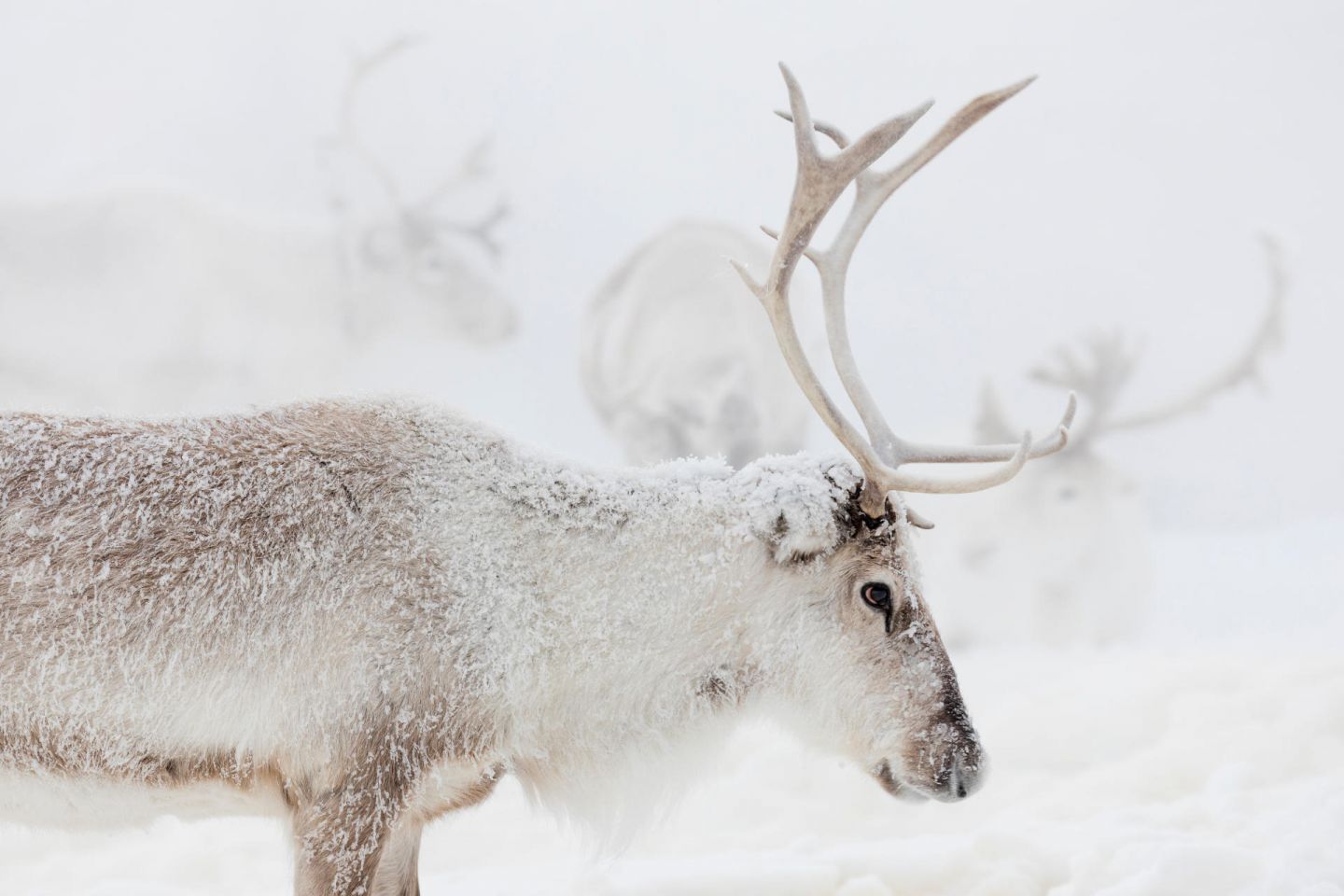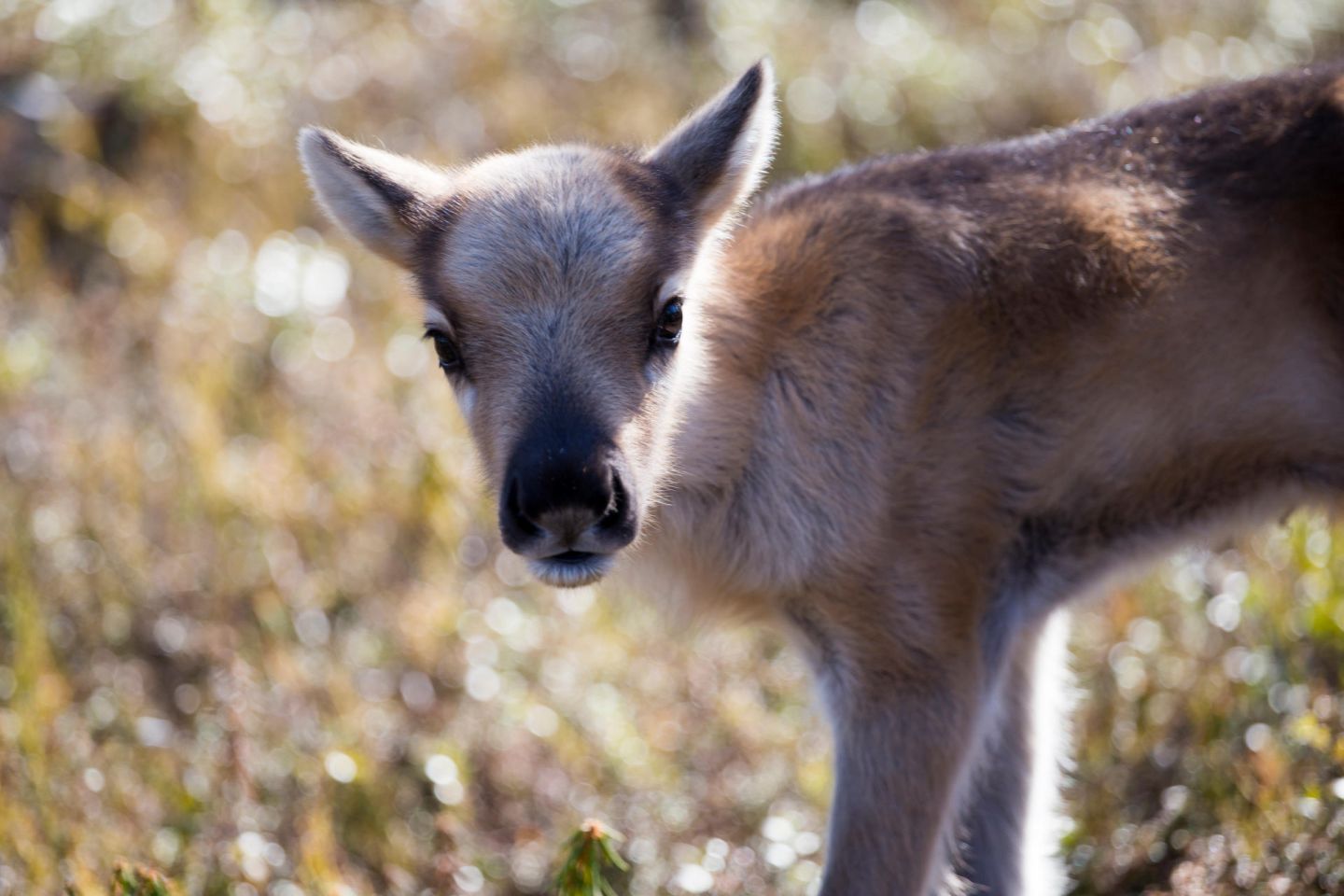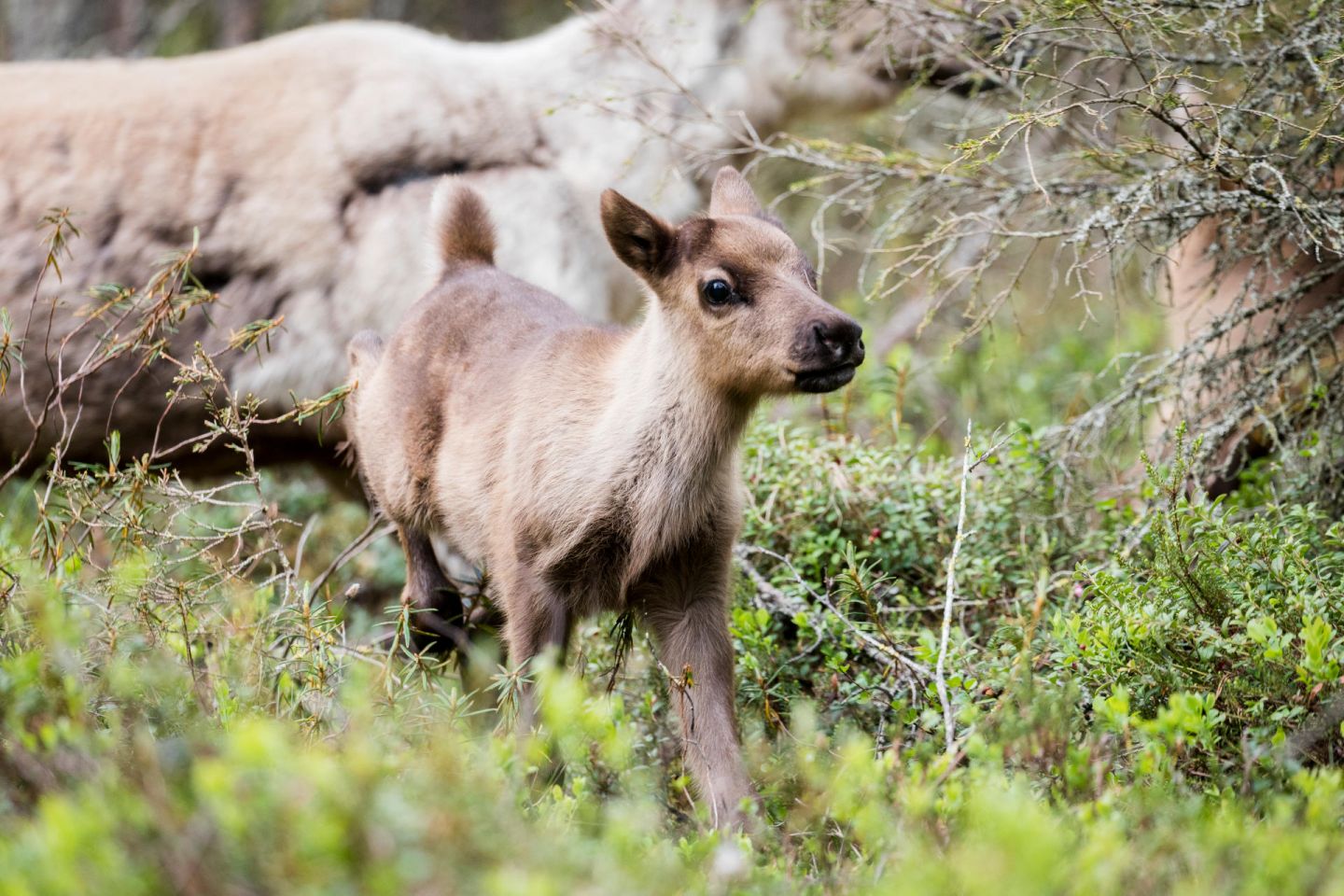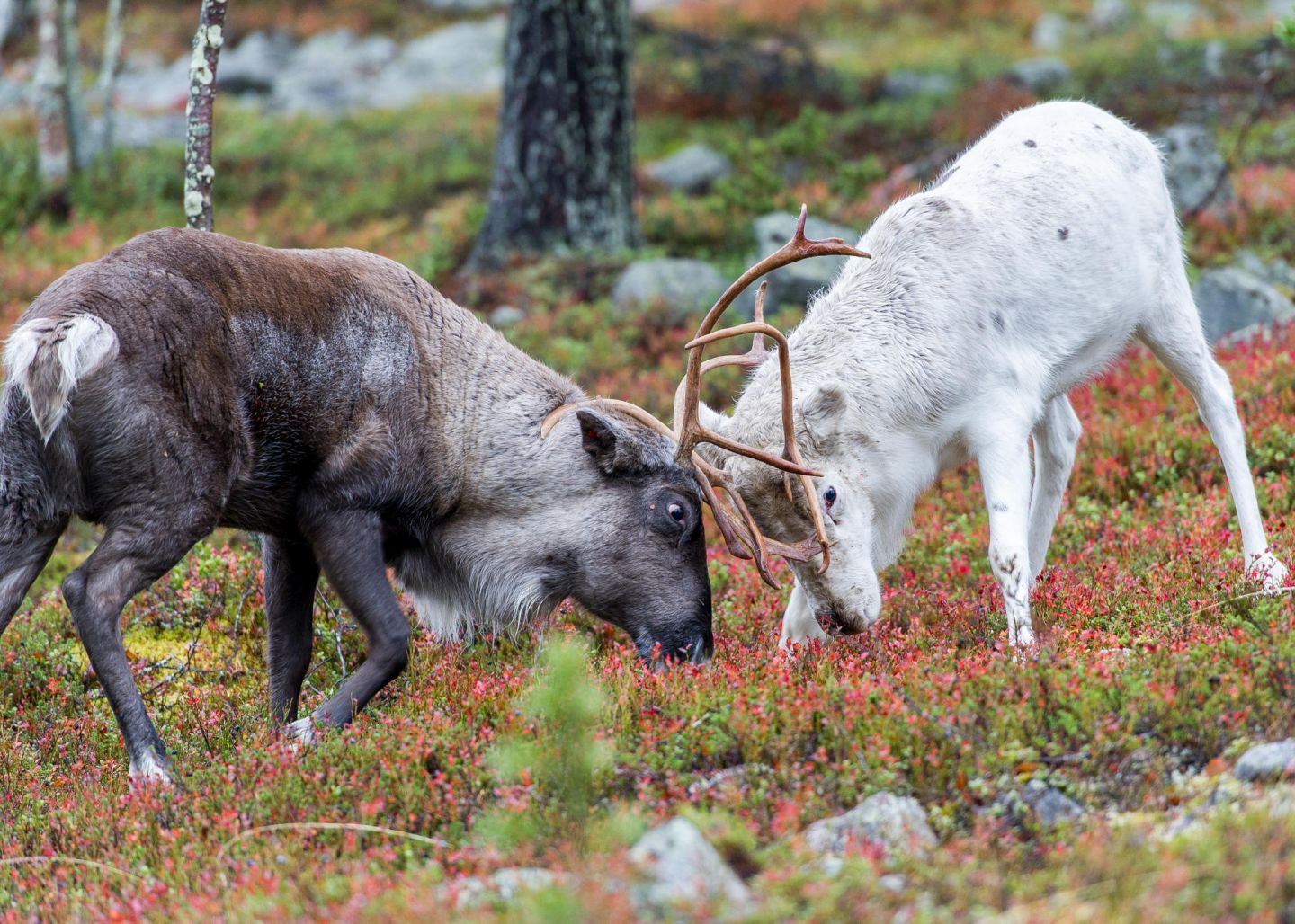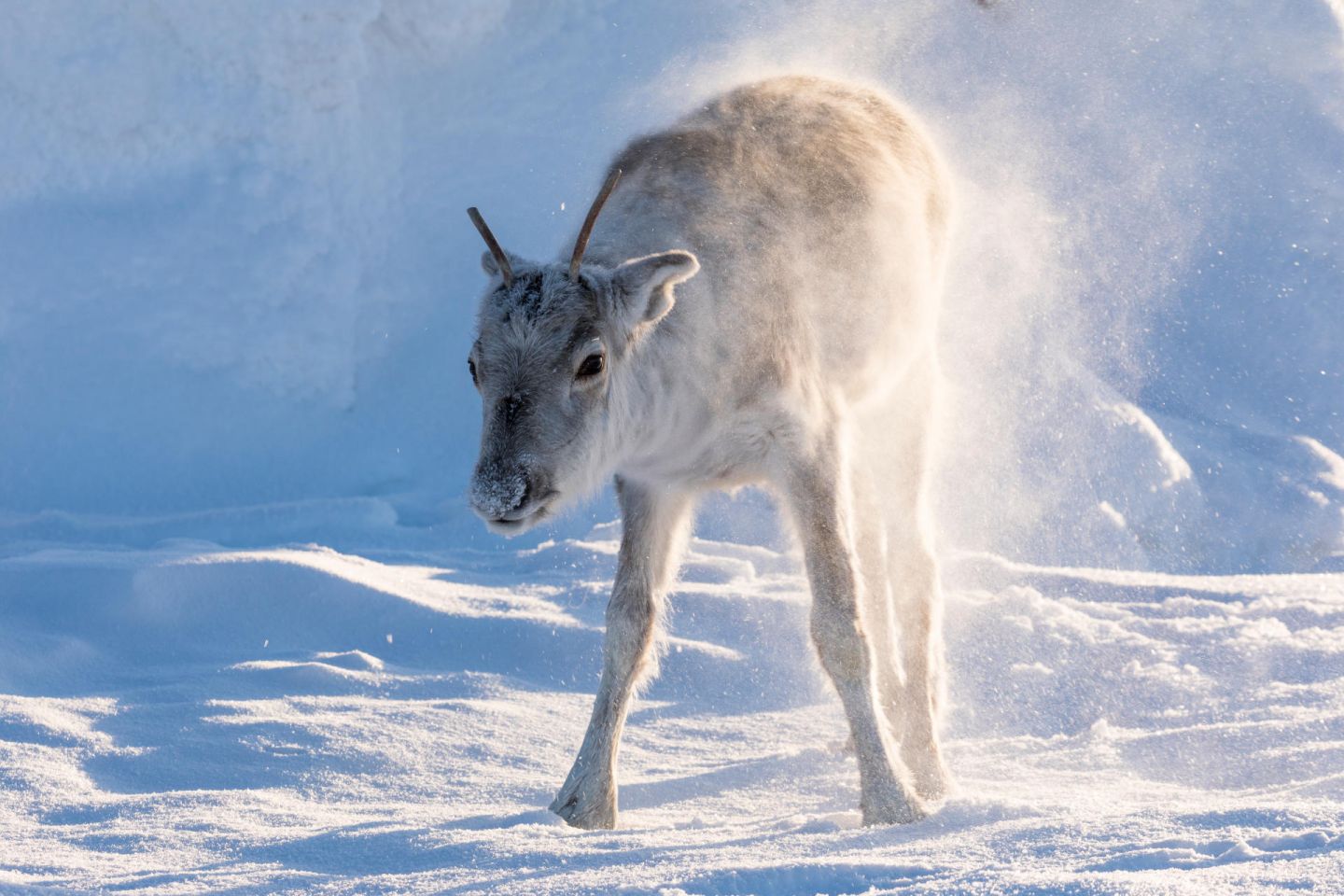When is a reindeer born? What do they eat in summer? What do they eat when the ground is frozen? Learn all this and more as we explore the 1st year of a reindeer’s life!
A reindeer’s life is one of never-ending movement, of calves following their mothers across Arctic fells, of antlers locked in battle, of frozen lichens liberated from the cold earth for a few moments before moving into a reindeer’s stomach. Over the course of a year, the world’s only domesticated deer lives and fights and loves and journeys through an Arctic that few have ever experienced. Here’s some reindeer facts about the first year of that journey.
Mayday celebrations
As Finns prepare for the coming Nightless Night by taking quick dips in chilly rivers and gobbling up ice cream from streetside kiosks, reindeer are usually celebrating their birthdays. Most reindeer are born in May or early June, just in time to take advantage of the warmest, greenest time of year in Finnish Lapland.
Unlike people (even Finns), reindeer are born ready for action. Weighing around 5 kilos, a newborn reindeer is usually standing and moving within a few hours of birth. The first thing on their mind, and the main theme of their life, is food. For the first summer, mother’s milk is all important. Like all mammals, reindeer grow incredibly fast on nutritious mother’s milk. They are also born with a special fur and fat that keeps them warm during the early days of summer. Within one week, they’re already eating vegetation. Within the first few weeks, their antlers begin growing. Reindeer antlers are the fastest growing bones in the world; in the summer, antlers can grow at an astonishing 2 cm per day! And female reindeer are the only female deer in the world that grow antlers. After giving birth, females lose their antlers. But don’t worry, they grow back pretty fast!
Sweet summer child
Summer is a time to eat and grow, and grow and eat. Eating is so important to reindeer that their bodies even change the way they sleep so they can take advantage of the Midnight Sun to … you guessed it, eat ‘round the clock. While they eat, their winter fur drops off, leaving reindeer looking, well, not their best.
As the Arctic climate is changing, reindeer probably find themselves conflicted. See, a reindeer prefers summers that are rainy and cool. But that means less green food and more flying, biting insects. In recent years, summers have gotten warmer and warmer, which results in much more vegetation to chomp down and less insects. But warm or hot weather is uncomfortable for a chubby, furry reindeer.
Summer is also when most of the herds are gathered together by their owners and calves earmarked. Some herders mark the calves in autumn. The reindeer are gradually moved through a series of fences until they’re penned together. Then reindeer herders tag all the calves, determine their mothers—and therefore their owners—and then mark the calves’ ears with the owners’ marks. Afterward, the herds are released back into the wild to continue their never-ending search for grub.
Falling leaves and fancy fungi
After a full summer of consuming lichens, herbs, grasses and anything else that catches their eye, eye-popping autumn is when a reindeer is at its biggest and strongest. Like anyone who eyes a remaining slice of pizza, this doesn’t stop them from eating more. But the greenery of summer gives way to mushrooms that sprout up from the bogs and forests and fellsides.
Their winter fur also starts coming back, filling in patches. A calf won’t engage in mating yet, but for the older reindeer, autumn is rutting season. The bucks with the biggest antlers will defend their harems against rivals, sometimes younger and stronger, with antler fights. Like the stereotypical Finn, reindeer are obstinate and thick-headed, meaning their fights can last for hours, even all night. Males’ antlers drop after the rutting season. They’ll also attack people during this season, so keep your distance and use your zoom lens if you want to get a nice picture.
The most wonderful time of year
As daylight hours shrink and the Northern Lights begin dancing in the twinkling skies, calves wean off mother’s milk. The combination of weaning, less greenery and the coming cold eat through a reindeer’s fat reserves, which explains why they’re so single-minded throughout the year. They travel in herds across the wilderness, through forests and across fells, in search of food. Their hooves are specially adapted for traveling on cold, slippery surfaces and digging through snow in search of lichens. Reindeer and their cousins, deer, are the only mammals that can digest the lichens, which have high energy perfect for animals living in the Arctic. They’ll dig holes through the snow, and the females with the largest antlers will defend their holes from sneaky lazier reindeer.
Even past the equinox, there’s a heavy cover of snow across northern Finland, which can make finding food difficult. In these times, reindeer move onto beard lichen, which hangs from trees, and other forms of food.
Reindeer are perfectly adapted to the deep cold that sweeps across Lapland in the heart of winter. Their fur is thick, but the hairs themselves are hollow and light. The air inside the hairs are great insulators–in fact, a healthy reindeer can thrive in temperatures as low as -50°C! Their legs are also incredible; they have strong circulation and special bone marrow that keeps their legs warm while trudging through deep snow.
As May rolls around, the cold and snow are usually on its way out the door. Calves are born, and their first thought is, “I’m hungry.” And the cycle continues.
Reindeer fun facts
- Adult reindeer are 90cm to 110 cm tall on average. A male weights 90-180 kg, and a female 60-100 kg.
- Reindeer antlers drop and regrow every year.
- Reindeer that migrate across the mountains have lighter fur and wider antlers; reindeer that travel through forests have darker fur and narrower antlers.
- A reindeer lifting its white tail while running is a signal to the other reindeer: flee!
- The first reindeer races in Finland were held in 1932. Racing reindeer are all males.
- Finnish Lapland has a reindeer population of about 200,000. That’s 20,000 more reindeer than people!
- Reindeer droppings look like little chocolate balls. They do not taste like chocolate!
- Reindeer are one of the most important parts of the indigenous Sámi culture in Finnish Lapland.
Looking for more stories about our antlered friends? Check out our myths and legends of reindeer.
Reindeer are just one of the best reasons to visit Lapland in the winter.



